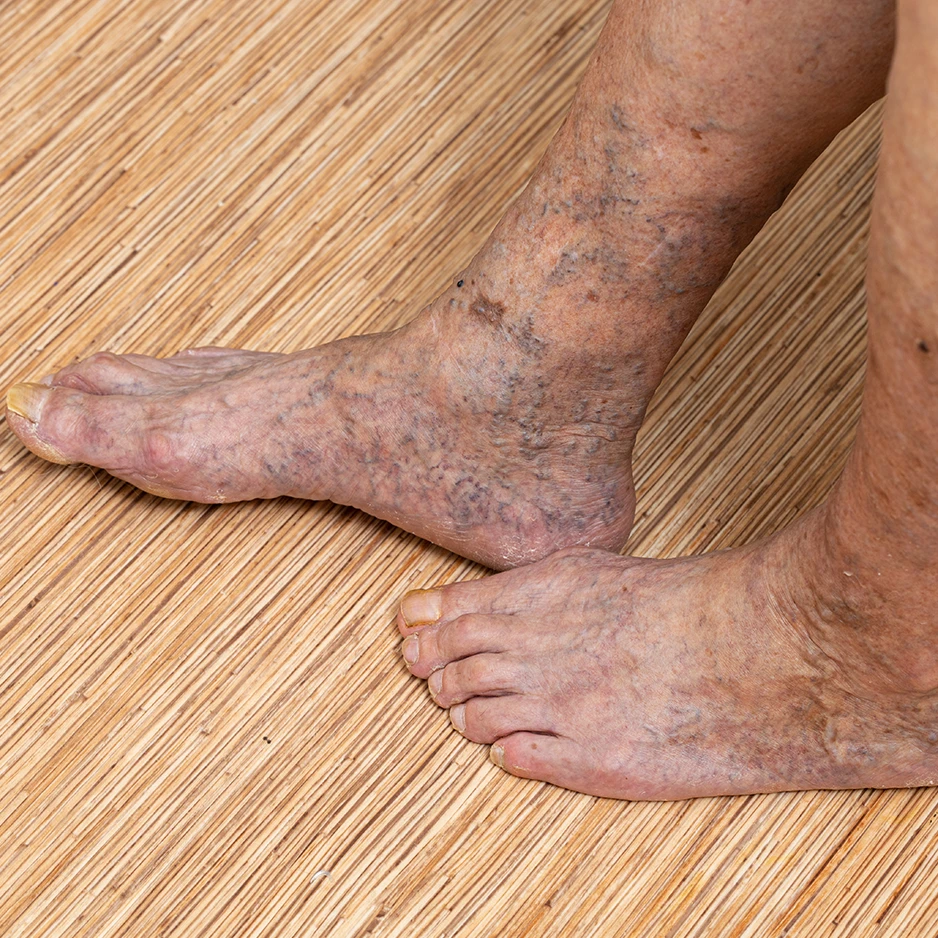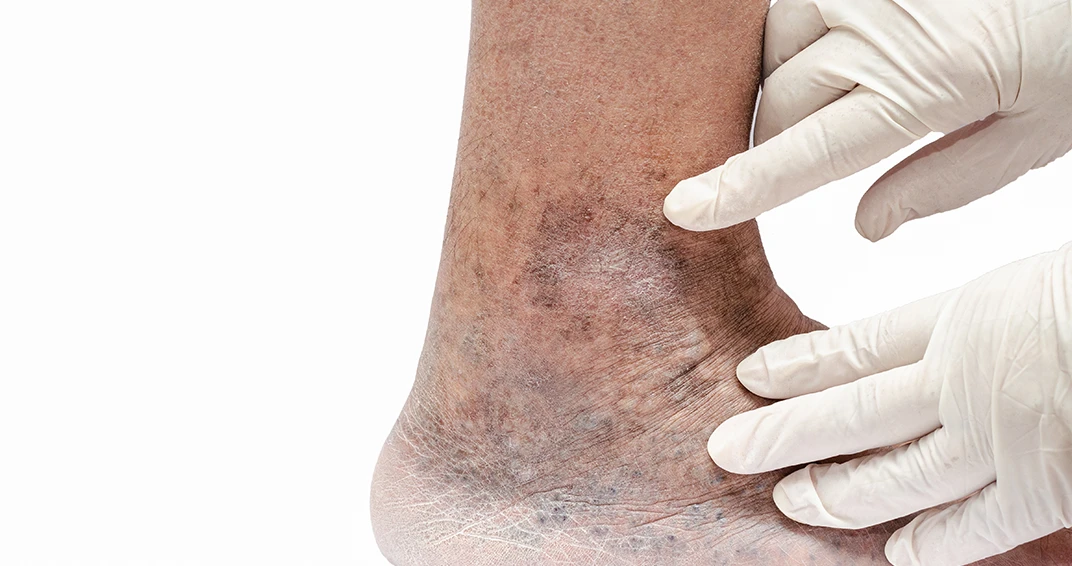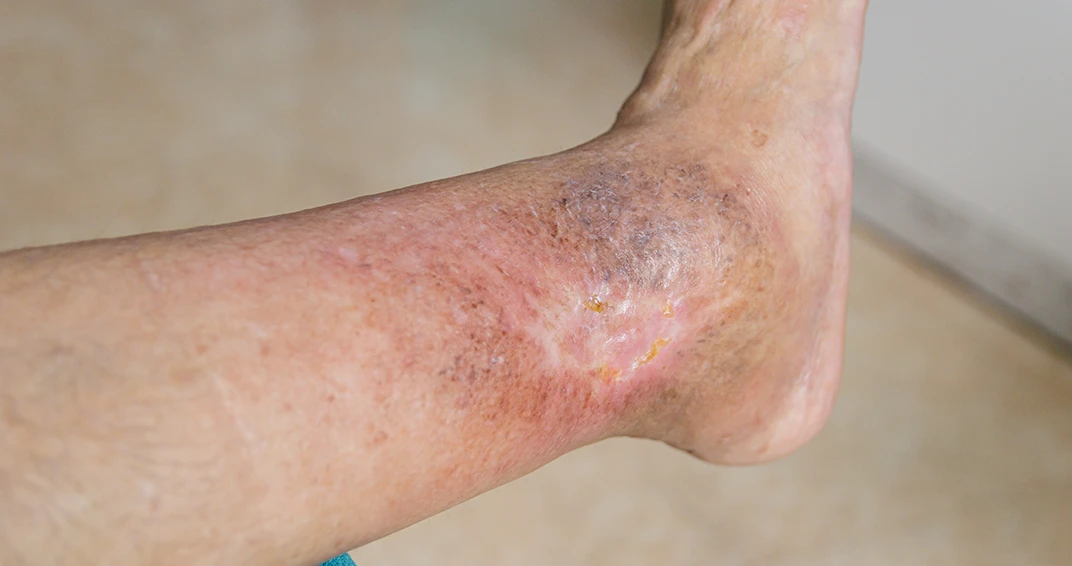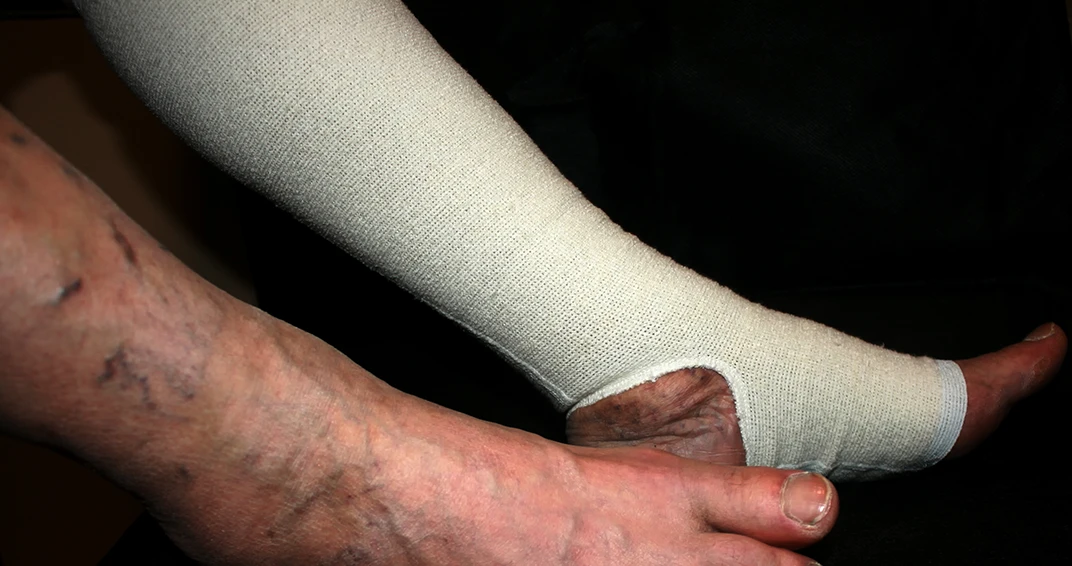Leg Vein Ulcers: Causes, Healing & Treatment
Leg vein ulcers, accounting for approximately 70 percent of all leg ulcers, can be a source of discomfort and concern and significantly impact an individual’s well-being. With proper diagnosis and treatment from the experts at Minneapolis Vein Center, leg vein ulcers can be appropriately managed. If you or a loved one is dealing with leg vein ulcers, don’t hesitate to schedule a consultation to explore the most suitable treatment options and start the journey toward healthier, ulcer-free legs.

Leg Vein Ulcers Symptoms & Treatments

What are Leg Vein Ulcers?
Leg vein ulcers, or venous stasis ulcers, are open sores that typically occur on the lower leg, just above the ankle. They result from chronic venous insufficiency, a condition where the veins in the legs struggle to return blood to the heart efficiently. The characteristic appearance of a leg with venous problems includes swelling and dry, itchy, brownish skin around the ulcer. This condition may also appear as varicose eczema.
The ulcers appear weeping and raw but are often painless unless infected. They tend to occur on the inside of the leg and can significantly impact a person’s quality of life.

What Causes Leg Vein Ulcers?
The main contributing factors include:
- Faulty Vein Valves: Inefficient or damaged valves within the leg veins can lead to blood pooling in the lower extremities, causing pressure and skin changes.
- Blood Clots: Deep vein thrombosis (DVT) or superficial thrombophlebitis can obstruct blood flow, increasing the risk of ulcers.
- Varicose Veins: Enlarged and weakened veins near the skin’s surface can contribute to venous insufficiency and ulcer formation.
- Obesity: Excess body weight can strain the veins, exacerbating venous issues.
- Lifestyle Factors: Long periods of standing or sitting, lack of exercise, and a sedentary lifestyle can contribute to venous problems.

How are Leg Vein Ulcers Treated?
Effective treatment of leg vein ulcers typically begins with addressing the wound itself. Minneapolis Vein Center (MVC) often initiates treatment with a medicated wound wrap or Unna boot to promote wound healing. However, further interventions may be necessary for comprehensive management and to prevent recurrent ulcers or other complications.
A crucial step in the treatment process is a complete ultrasound evaluation to determine the extent of venous disease. This evaluation helps identify specific issues in the leg veins, such as valve dysfunction or blood clots, which can guide the treatment choice.
Schedule an Appointment
If you notice the signs and symptoms of leg vein ulcers, schedule a diagnostic appointment at Minneapolis Vein Center right away.
Conditions We Treat
Quick Links
Pay your bills securely online with credit cards, debit cards, or checks.
(763) 398-8710
veincenter@mplsrad.com
2800 Campus Drive, Suite 20
Plymouth, MN 55441